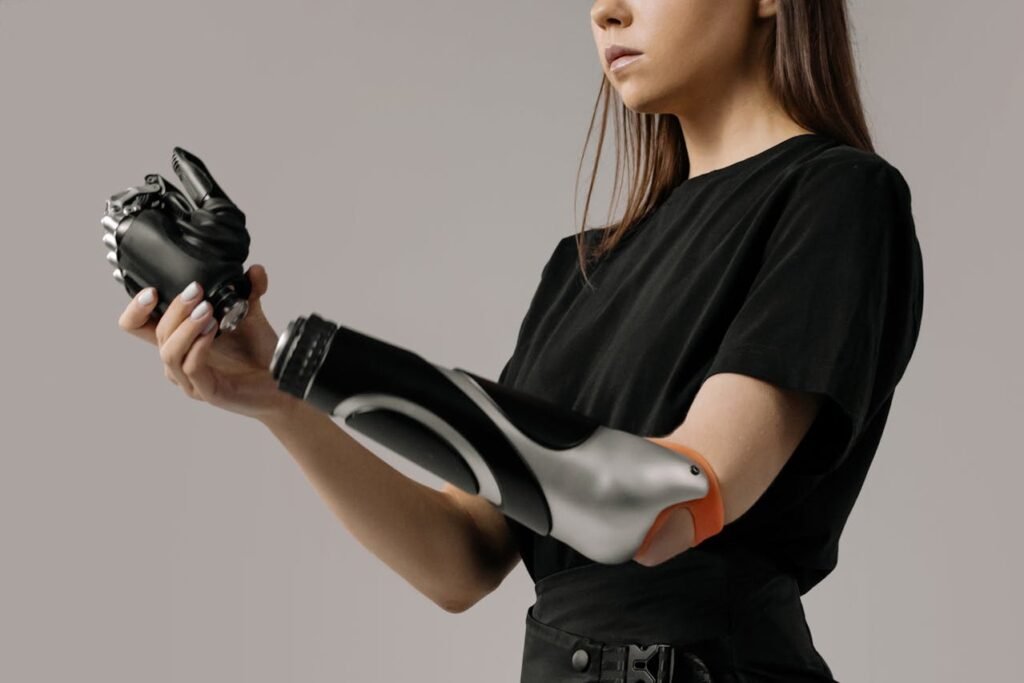Rehabilitation after limb loss is about much more than healing wounds. It is about teaching the body and mind to work together again. For those using advanced solutions like robotic hands or mechanical fingers, the challenge goes beyond simply wearing the device—it is about learning to control it, trust it, and use it as naturally as possible.
This journey can feel long, and sometimes progress is slow. Muscles weaken, signals get unclear, and movements may not feel smooth at first. This is where EMS, or Electronic Muscle Stimulation, becomes a game-changer. By gently activating and strengthening the muscles that control robotic hands and mech fingers, EMS makes rehab more effective, more comfortable, and more rewarding.
In this article, we will explore how EMS can be used as part of rehabilitation for advanced prosthetic devices, why it matters, and how users, therapists, and clinics can apply it for lasting results. Our goal is to explain everything in simple words, so it feels less like medical jargon and more like a real conversation.
Understanding EMS in the Context of Robotic Hands and Mech Fingers
What EMS Really Does
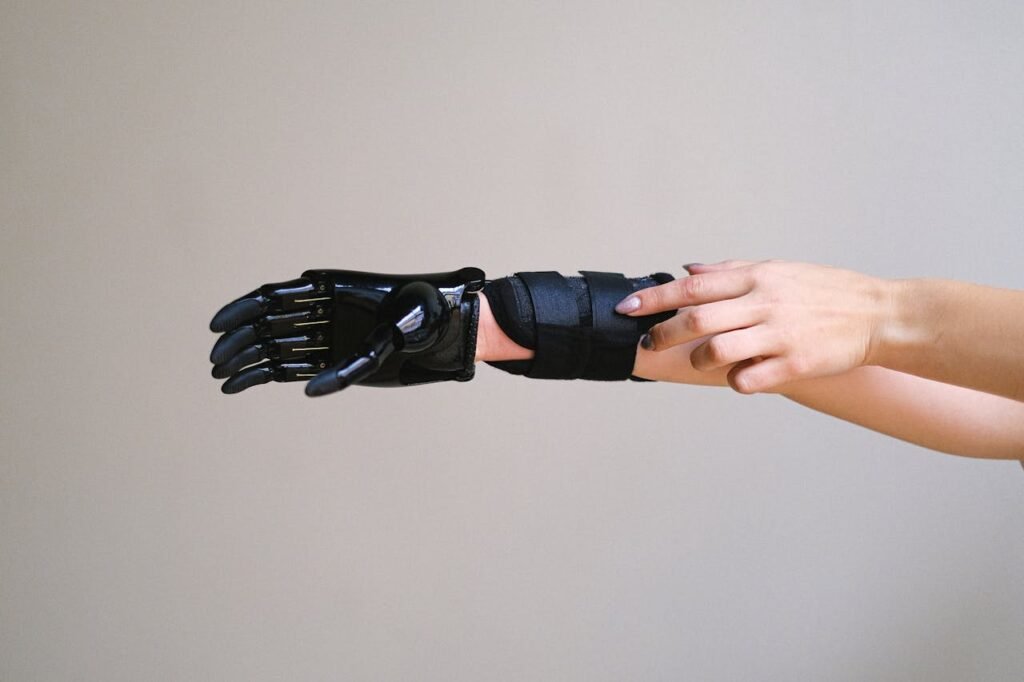
EMS, or Electronic Muscle Stimulation, works by sending small electrical pulses to muscles. These pulses make the muscles contract, just as they would when your brain tells them to move. For someone with limb loss, the connection between the brain and the muscle may be weaker. EMS steps in to strengthen that connection by keeping the muscles active and responsive.
For users of robotic hands and mechanical fingers, this matters a lot. These devices depend on muscle signals to work. The clearer and stronger the signals are, the better the device responds. EMS ensures those signals don’t fade and keeps the body ready to work with the prosthetic.
Why EMS and Prosthetics Fit Together
Robotic hands and mech fingers are designed to feel intuitive. You think about gripping a cup, and the prosthetic responds. But if the muscles are weak, or if they haven’t been used in a long time, the prosthetic may not move smoothly.
That’s where EMS plays its part. By activating those muscles during rehabilitation, EMS improves both strength and coordination. The result is a prosthetic that feels easier to control and more natural to use. Instead of struggling to send signals, the user gains confidence that every attempt to move will actually work.
The Special Role for Mech Fingers
Mechanical fingers are often chosen when full hand prosthetics aren’t needed. They can restore grip and function for people with partial hand differences. These devices rely on the remaining muscles in the hand and forearm to work.
EMS makes these muscles stronger and quicker to respond. This allows mech fingers to open, close, and grip with greater precision. It also helps prevent stiffness in the small muscles that are so important for finger movements. Without EMS, these muscles can quickly weaken, making the device harder to use.
Preparing the Body for Robotic and Mech Prosthetics
Why Early Muscle Training Matters
When a person first receives a prosthetic hand or finger, the muscles that control it may not be ready. They might be too weak, too stiff, or simply not used to sending signals anymore. This can make the first experience with a prosthetic frustrating.
Using EMS early—before or alongside prosthetic fitting—changes this experience. The muscles are “warmed up” and prepared to work. This makes the first sessions with the device smoother, giving the user a sense of success right away. That early confidence often makes the difference between someone embracing their prosthetic or giving up too soon.
EMS as a Bridge Between Brain and Device
After limb loss, the brain still remembers how to move the missing part, but the signals don’t always reach the right muscles. This can create a gap between what the user wants to do and what actually happens. EMS helps close that gap.
When muscles are stimulated, the brain notices. Even if the movement is assisted by EMS, the brain begins to rebuild its pathways to those muscles. Over time, this makes it easier to send signals voluntarily. For prosthetic users, that means more accurate and reliable control.
Reducing Stiffness and Pain
Stiffness is one of the biggest barriers in rehabilitation. When joints and muscles don’t move freely, using a prosthetic becomes uncomfortable. EMS helps by improving blood flow and gently releasing tightness in the muscles. This makes stretching easier, reduces pain, and creates a more flexible base for prosthetic training.
For mech finger users, this is especially important. The small joints in the hand can become stiff quickly, making it hard to grip or pinch. EMS keeps these areas supple and responsive, ensuring that the prosthetic feels like an extension of the body rather than a separate tool.
Building Strength and Control with EMS
Strength That Supports Function
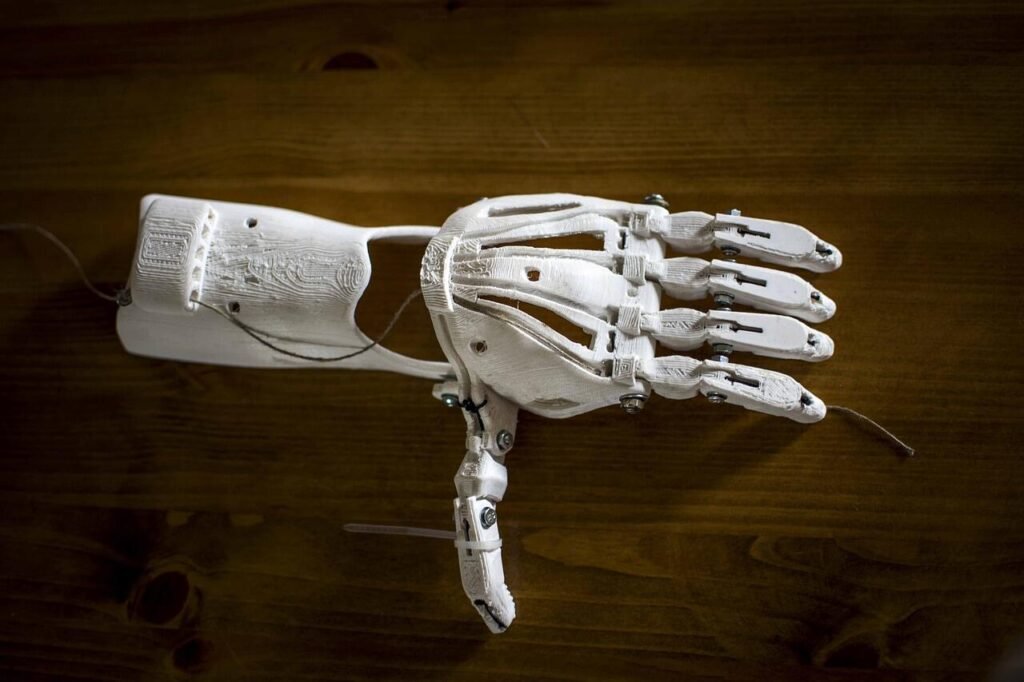
Strengthening muscles is about more than lifting heavy weights. For prosthetic users, strength means having enough power to send clear signals and maintain endurance throughout the day. EMS builds this type of strength without putting strain on the joints.
For example, a user with a robotic hand may need strong forearm muscles to grip objects securely. Regular EMS sessions help build that strength gradually, so gripping a bottle or holding a phone feels less tiring. Stronger muscles also mean steadier control, which reduces accidents like dropping objects.
Training for Precision
Control is just as important as strength. Robotic hands and mech fingers often allow for delicate actions, such as picking up a coin or typing on a keyboard. These tasks require precise muscle activation. EMS helps refine that control by repeatedly stimulating specific muscle groups.
As muscles contract and relax with EMS, the brain learns to recognize and fine-tune these signals. Over time, this makes voluntary movements more accurate. Instead of clumsy attempts, users can perform everyday tasks with more ease and confidence.
Building Endurance for Daily Use
A prosthetic is not just used for therapy—it’s used for living. That means wearing it through meals, work, travel, and family activities. This requires endurance. EMS helps build muscle stamina by simulating repeated contractions, much like a workout.
With consistent use, users find that they can wear their prosthetic for longer periods without discomfort. They also experience less fatigue, which makes it easier to stay active and engaged throughout the day.
Practical Rehab Routines with EMS
Starting with Gentle Sessions
When someone begins EMS therapy, it is important to start with short, gentle sessions. Even 10 to 15 minutes of stimulation can make a big difference in waking up muscles that have been inactive for months. The goal in the early phase is not to push hard but to reintroduce movement, build comfort with the sensation, and slowly restore activity in the limb.
Over time, sessions can be extended to 20 or 30 minutes, with the intensity increased as muscles grow stronger. This gradual build-up keeps the process safe and helps users stay motivated. By pacing progress in this way, the body learns steadily instead of being overwhelmed.
Pairing EMS with Functional Movements
The most powerful results come when EMS is combined with real movements. For example, while EMS stimulates the forearm, a user can practice opening and closing their robotic hand. For a mech finger user, EMS can run while they practice gripping a ball or pinching objects. This pairing strengthens the brain’s understanding of which muscles control which prosthetic actions.
The result is smoother, faster learning. Instead of relying only on passive stimulation, the user actively participates, building stronger muscle memory that carries over into daily tasks.
Using EMS as Part of Daily Life
One of the advantages of EMS is how easy it is to integrate into daily routines. Sessions can be done while sitting at a desk, watching television, or relaxing in the evening. This flexibility makes it easier to stay consistent, which is critical for long-term results.
Some users even make EMS part of their pre-activity routine. A short session before work, cooking, or social activities can warm up the muscles, making prosthetic use feel more fluid during the day. This approach transforms EMS from a therapy exercise into a lifestyle tool.
EMS in Clinical Rehabilitation
A Therapist’s Perspective
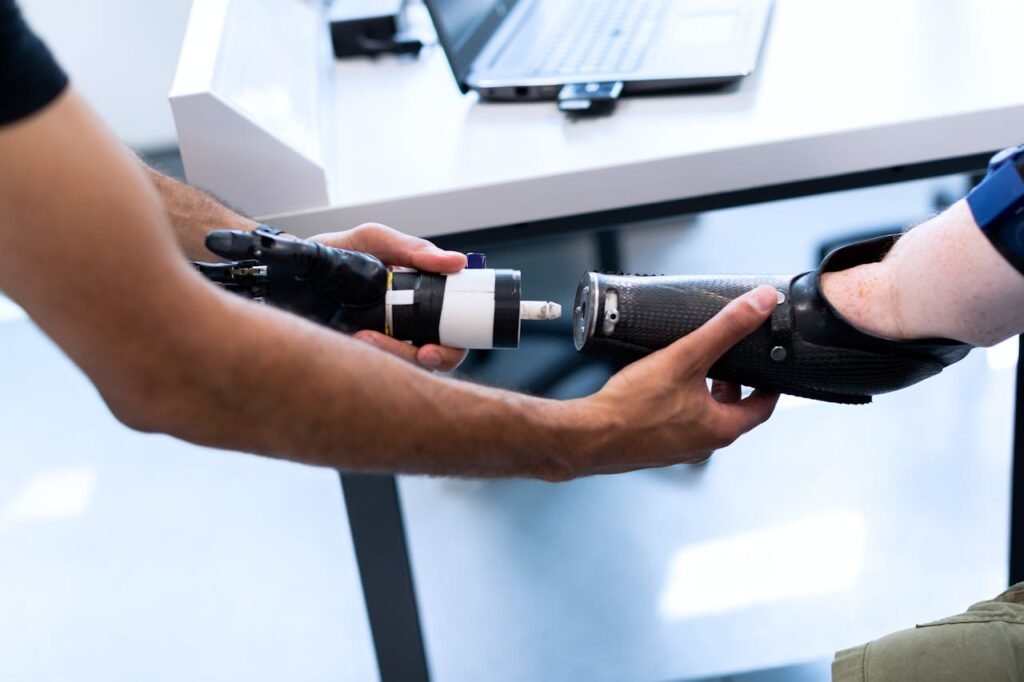
Therapists working with prosthetic users often face a challenge: progress can be slow, and motivation can dip. EMS provides a solution by showing visible results quickly. Even in the first session, patients can see their muscles contracting, which proves that the body is still capable of improvement. This visible feedback can be incredibly encouraging.
Clinics can integrate EMS into both pre-prosthetic and post-prosthetic training. Before fitting, EMS prepares the muscles and ensures stronger signals. After fitting, it supports endurance, fine control, and socket comfort. By combining EMS with guided exercises, therapists can create a more comprehensive program that addresses both physical and emotional needs.
Creating Tailored EMS Programs
Not every user has the same needs. A person with a robotic hand may need training for grip strength and endurance, while a user with mech fingers may need more focus on fine motor control. Clinics can design specialized EMS routines that match these goals.
For example, a “grip training program” might target the forearm muscles, while a “precision program” might focus on smaller muscle groups. Tailoring EMS to the user’s device and lifestyle creates better outcomes and shows patients that the clinic is invested in their personal journey.
Demonstrating Progress with Data
One of the strongest advantages of EMS in a clinic is the ability to track measurable results. Muscle tone, endurance, and control can all be monitored over time. Showing users their improvements not only validates their effort but also helps clinics demonstrate success in rehabilitation programs.
This evidence-based approach builds credibility for the clinic, reassures families, and motivates patients to continue with their sessions. It transforms rehabilitation from something abstract into something concrete and measurable.
The Emotional Benefits of EMS
Restoring Confidence in Movement
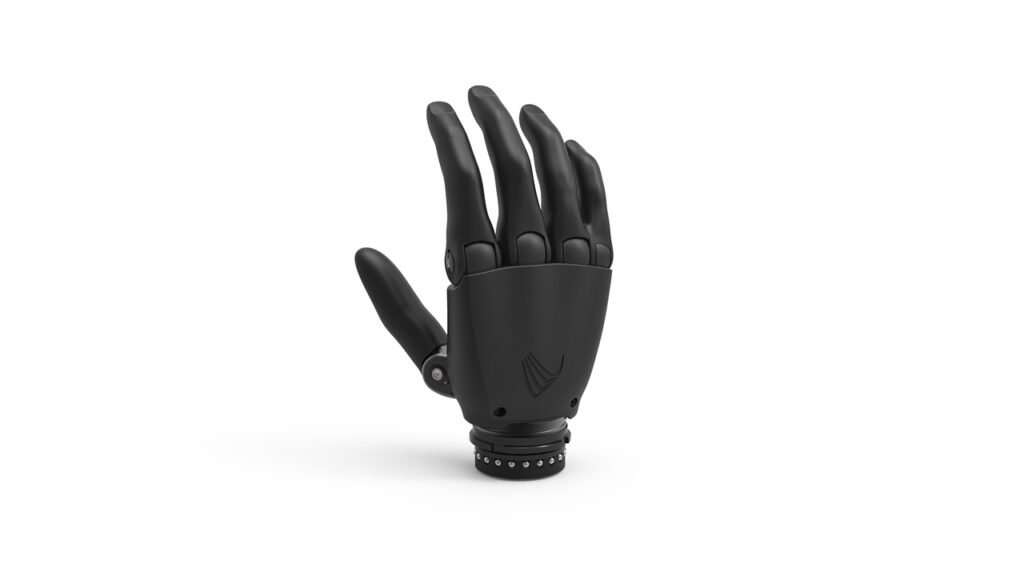
After limb loss, even simple movements can feel uncertain. Will the prosthetic respond? Will it grip properly? Will I drop something in public? These doubts are common and can hold users back. EMS helps restore confidence by providing reliable muscle activation and visible progress.
As users see their body responding more predictably, they feel reassured. Confidence grows not only in therapy but in everyday life—whether it’s shaking hands, holding a glass, or typing on a computer. This confidence often becomes the foundation of long-term success with prosthetics.
Reducing the Fear of Failure
Many prosthetic users experience frustration when the device doesn’t respond as expected. This can create a fear of failure, leading some to avoid using the prosthetic altogether. EMS helps reduce this fear by showing steady, achievable progress. Each contraction is proof that the body is learning, and each improvement makes users more willing to practice. Over time, this turns hesitation into motivation.
Bringing Back Independence
At its heart, rehabilitation is about independence. For prosthetic users, this means being able to perform tasks without help, go about daily routines comfortably, and participate fully in work and social life. EMS contributes to this independence by making prosthetic use less tiring, more natural, and more reliable. With stronger muscles and clearer signals, users don’t have to depend as much on others. They regain a sense of control and dignity that is often lost after limb loss.
Long-Term Benefits of EMS with Robotic Hands and Mech Fingers
Preventing Muscle Weakness Over Time
One of the most important long-term benefits of EMS is its ability to prevent muscle weakness. After limb loss, the muscles in the residual limb are at risk of shrinking because they are not used as often. This muscle loss can make prosthetic control harder and reduce socket comfort. EMS keeps these muscles active by stimulating contractions regularly.
For robotic hand users, this means signal strength stays consistent, which helps the prosthetic respond more smoothly. For mech finger users, this means grip and pinch movements stay strong and reliable. Instead of muscles weakening with time, they remain ready to support the prosthetic for years.
Supporting Comfort and Fit
A prosthetic can only be effective if it fits well. Over time, changes in the shape of the residual limb can cause sockets to become loose or uncomfortable. EMS helps maintain muscle bulk, which supports a more stable limb shape. This leads to a better, more consistent fit of the prosthetic socket.
With less need for frequent adjustments, users experience fewer interruptions in their daily life. Comfort improves, and the prosthetic feels like a true extension of the body rather than a piece of equipment.
Building Endurance for Daily Life
Daily activities like cooking, working, or carrying objects can quickly tire prosthetic users if their muscles are not conditioned. EMS builds endurance in a way that regular exercise alone often cannot. By simulating repetitive contractions, it trains muscles to keep working over long periods.
This means prosthetic users can wear their devices longer without fatigue. For robotic hand users, it means being able to grip and release objects repeatedly during the day. For mech finger users, it means maintaining a secure hold on small items without strain.
Reducing Risk of Secondary Issues
When muscles are weak, other parts of the body often take on extra work. This can lead to pain in the shoulders, neck, or back. EMS helps prevent these secondary issues by keeping the targeted muscles strong and balanced. With better muscle support, the whole body works more naturally, reducing strain and protecting long-term health.
Advanced Integration of EMS with Robotic Hands
Pairing EMS with Prosthetic Training
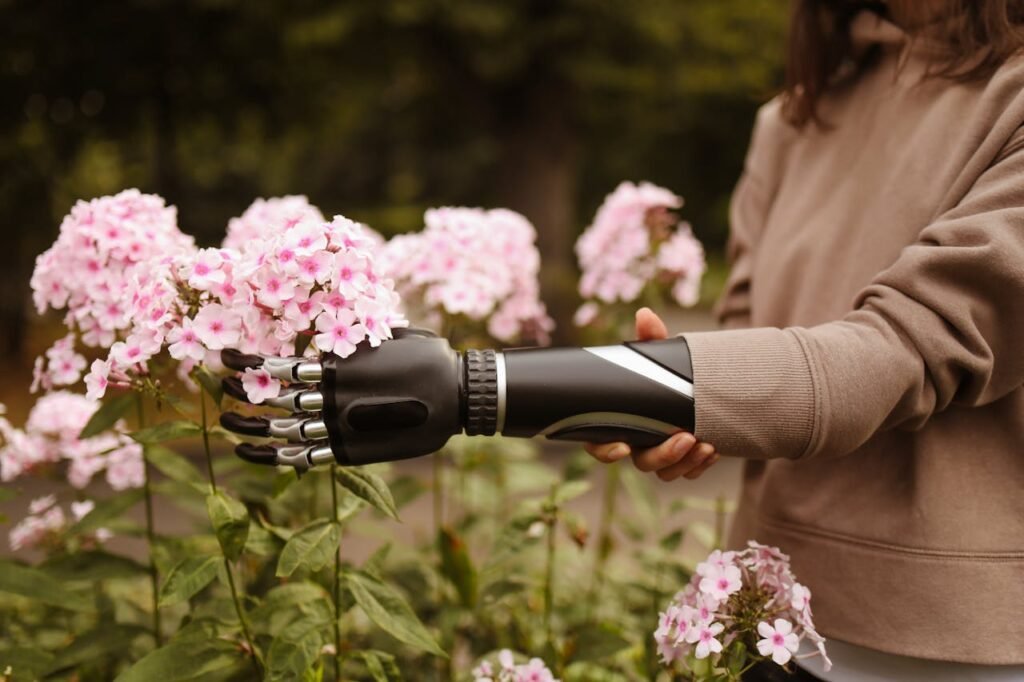
The future of rehabilitation lies in combining EMS with active prosthetic training. When a user attempts to grip or release with their robotic hand, EMS can stimulate the corresponding muscles at the same time. This pairing reinforces the brain’s pathways and strengthens the body’s signals.
Over time, this makes control smoother and more intuitive. Users don’t have to “think hard” about every action—the movement begins to flow naturally, as if the prosthetic were part of them.
Smart EMS Devices
Technology is evolving quickly, and EMS devices are becoming smarter. Imagine a system that senses when you are about to move your prosthetic and delivers stimulation exactly when it’s needed. This kind of real-time support could make the learning process even faster.
In the future, EMS and prosthetics may be fully integrated into a single system. Instead of being separate tools, they will work together seamlessly, making the prosthetic feel even more like a natural hand.
Creating Feedback Loops
Some bionic prosthetics already provide sensory feedback, letting users “feel” pressure or grip. Adding EMS into this loop could take it a step further. If the prosthetic detects a weak signal, EMS could automatically activate the muscle to strengthen it. This creates a continuous cycle of learning, where the device not only responds to the body but also helps train it.
A Vision for the Future
Empowering Users at Every Stage
The true promise of EMS is not just in short-term recovery but in lifelong empowerment. From the first moment a user tries a robotic hand or mech finger, EMS can make the journey smoother. It keeps progress steady, reduces setbacks, and ensures that users never feel like they are starting from zero again.
Supporting Clinics and Therapists
For rehabilitation centers, EMS is more than a therapy tool. It is a way to deliver measurable results, inspire patients, and stand out as leaders in advanced care. As EMS devices become more portable and affordable, clinics can extend their care into patients’ homes, ensuring continuity and consistency.
Transforming Prosthetic Use into a Natural Experience
Ultimately, the goal of prosthetics and EMS is the same: to help people move naturally and live fully. By working together, these technologies can turn what was once a struggle into a seamless experience. The future is not about machines replacing the body but about machines working in harmony with it. EMS makes this vision possible by keeping the body strong, active, and ready to engage.
Making EMS Part of Everyday Life with Robotic Hands and Mech Fingers
Turning Rehab into Routine
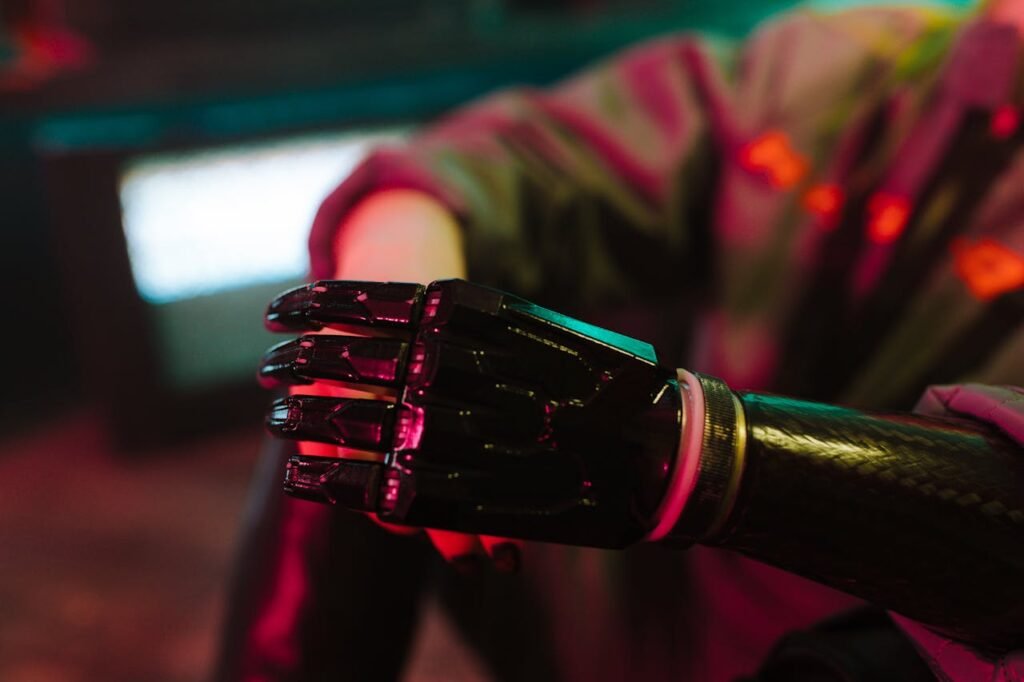
One of the greatest strengths of EMS is how easy it is to make it part of everyday life. Unlike heavy exercises or clinic-only therapies, EMS can be used at home, during simple routines like watching television or reading. This flexibility helps users stay consistent, which is the real key to success. With short daily sessions, users keep their muscles active, protect their prosthetic fit, and maintain smooth control.
Pairing EMS with Real Activities
The most progress happens when EMS is paired with daily tasks. Imagine stimulating forearm muscles while practicing gripping utensils, typing, or turning pages of a book. These real-world applications reinforce the brain-muscle-prosthetic connection. Instead of training in isolation, the user practices movements they will actually use, which makes the prosthetic more practical and natural in daily life.
Making Progress Visible
For many users, seeing progress is as important as feeling it. EMS provides both. Each contraction during stimulation is visible proof that the body is still capable of responding and growing stronger. Over time, users notice real changes—better grip, less fatigue, smoother control. Clinics can support this further by tracking results and showing users their improvements. This combination of visible proof and measured progress builds motivation and makes rehabilitation more rewarding.
Conclusion: Building Stronger Connections with EMS
Rehabilitation with robotic hands and mech fingers is about more than technology—it is about creating harmony between the body, the brain, and the prosthetic. Electronic Muscle Stimulation plays a vital role in this process. It keeps muscles active, strengthens signals, reduces stiffness, and builds endurance. Just as importantly, it restores confidence, comfort, and independence.
For new users, EMS prepares the body before prosthetic training begins. For long-term users, it protects muscle health and keeps prosthetics comfortable to wear. For clinics, it creates structured programs that deliver measurable results. And for families, it brings hope that progress is not only possible but sustainable.
At Robobionics, we design solutions that work hand in hand with rehabilitation tools like EMS. Devices such as Grippy™ and our Mech Finger systems are made to be affordable, practical, and life-changing. Combined with EMS therapy, they help people regain control, strength, and dignity in their daily lives.
If you are ready to explore how EMS can support your rehabilitation with robotic hands or mech fingers, we invite you to schedule a free demo with our team:
Your body remembers movement. Your prosthetic is ready to respond. With EMS, the two can come together—helping you take every step forward with confidence and freedom.



